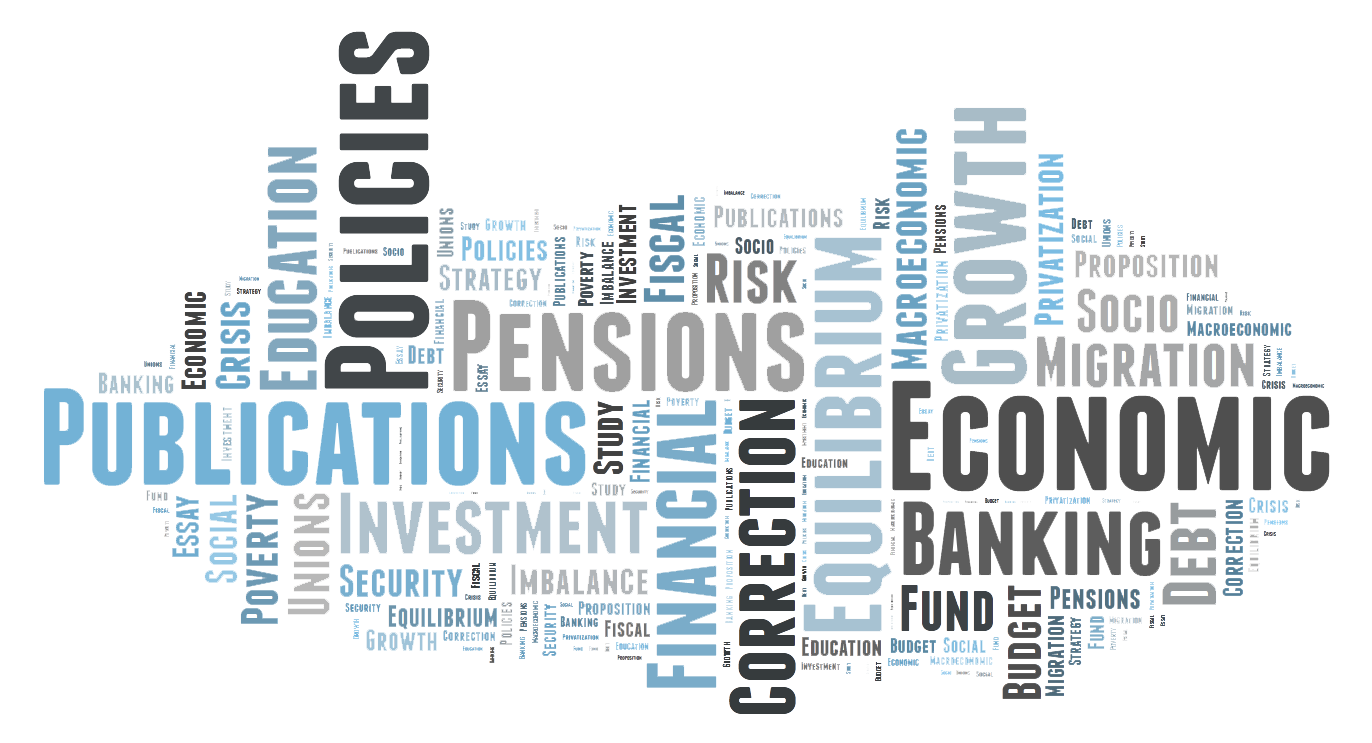Exploring Lebanon’s Growth Prospects
/in Economics & Economic Policies, EEP// Essays, Research & Propositions, Publications/by adminJean-Claude Berthelemy,Sebastien Dessus & Charbel Nahas
World Bank Policy Research Working Paper Series, number 4332
Discussion and Approval of the National Budget in Iraq
/in Economics & Economic Policies, EEP// Essays, Research & Propositions, History & Politics, HP// Essays, Research & Propositions, Publications/by adminDocument presented to the Iraqi Members of Parliament, within the UNDP “Program on Governance in the Arab Region”
The paper is destined for the Iraqi MPs and aims at illustrating the central place of fiscal choices in the economy but also, and mainly, in the consolidation of the functional legitimacy of the state, which is the central concern of Iraq today.
The study insists on the serious and simultaneous challenges that Iraq is facing (the restoration of security and the reconstruction of public facilities, the rise in oil revenues, the setting of rules for federalism and the transition towards market economy) and delineates the risks that are attached to each of them and to their joint occurrence.
It depicts a synthetic image of the effective functional role of public finance and oil revenues in the national economy and shows that, rather than acting as a complement to the economic activity, they tend to represent substitutes. Hence, the problematic of fiscal decisions is envisaged at three levels: their economic and institutional content, their interrelation and sequencing and finally the various processes of decision taking.
It concludes by confronting those theoretical elements with the great challenges that the country is facing, proposing some practical orientations and emphasizing the impact of the choices in public finance and of the processes of decision taking on the form of the state.
Syria: Fiscal Policy Perspectives
/in Economics & Economic Policies, EEP// Essays, Research & Propositions, Publications/by admin
The paper aims at analyzing the fiscal situation in Syria in order to help in the formulation of possible alternatives of fiscal policies. Beside their specific technicalities and constraints, fiscal options are approached as being a direct reflection of more general choices regarding the role of the state in managing the social and political balances in the country within its regional environment. In this perspective, Syria presents a challenging case of political economy.
After presenting the basic features of the Syrian economy, attention is devoted to understanding the rationale of the observed behaviors. The elements of choice in terms of trade-offs, management of time and available resources are then described. And finally some major options are sketched, without getting to the design of specific policies.
Migration and Education Decisions in a Dynamic General Equilibrium Framework
/in Economics & Economic Policies, EEP// Essays, Research & Propositions, Publications/by adminSebastien Dessus and Charbel Nahas
World Bank Policy Research Working Paper Series, number 4775
With growing international skilled labor mobility, education and migration decisions have become increasingly inter-related, and potentially have a large impact on the growth trajectories of source countries, through their effects on labor supply, savings, or the cost of education. The authors develop a generic dynamic general equilibrium model to analyze the education-migration nexus in a consistent framework. They use the model as a laboratory to test empirical conditions for the existence of net brain gain, that is, greater domestic accumulation of human capital (in per capita terms) with greater migration of skilled workers.
The results suggest that although some structural parameters can favor simultaneously greater human capital accumulation and greater skilled migration—such as high ratio of remittances over domestic incomes, high dependency ratios in migrant households, low dependency ratios in source countries, increasing returns to scale in the education sector, technological transfers and export market access with Diasporas, and efficient financial markets—this does not necessarily mean that greater migration encourages the constitution of greater stocks of human capital in source countries.
Financing and Political Economy of Higher Education in Lebanon
/in Economics & Economic Policies, Facts & Problems of Society, Latest Publications, Publications/by adminThe common approach to higher education in the MENA countries appears to be based on three assessments: 1) higher education provision is dominated by the public sector; 2) there is a major financing problem and 3) there is an increasing demand
On each of these points, the Lebanese case is different: 1) the private sector historically dominates the education sector; 2) financing of education in general and higher education in particular is exceptionally abundant and 3) no demographic increase is foreseeable: in 2025, the youth population is expected to decrease by -5 % . But the peculiarities of its history and present situation can be valuable in a comparative approach covering several Arab Countries since they shed light on specific factors, trends and options that might still be latent in other cases.
Lebanon is nevertheless facing severe challenges in the field of human capital formation and mobilization that go far beyond problems of financing:
- In spite of the relative abundance of human and financial resources, growth outcomes are very poor;
- Investment in human capital is probably excessive and is directly related in a circular causality to migration: the severe outflow of skilled migrants that prevents the domestic accumulation of human capital; and while skilled labor is attracted by emigration, unskilled Lebanese labour faces the competition of large numbers of temporary foreign workers;
- The Lebanese Government is unable to delineate a strategic vision for education in general and higher education in particular, resulting in the explosion of private higher education and diminishing means, quality and presence for the only public institution. This paper assesses the adequacy, efficiency and equity of higher education financing in Lebanon in both the public and private sector.
The conclusion discusses different approaches and strategies to remedy the challenges of higher education financing in Lebanon, acknowledging that higher education is far more a response to external stimuli than an exogenous lever or even an autonomous field of action.


